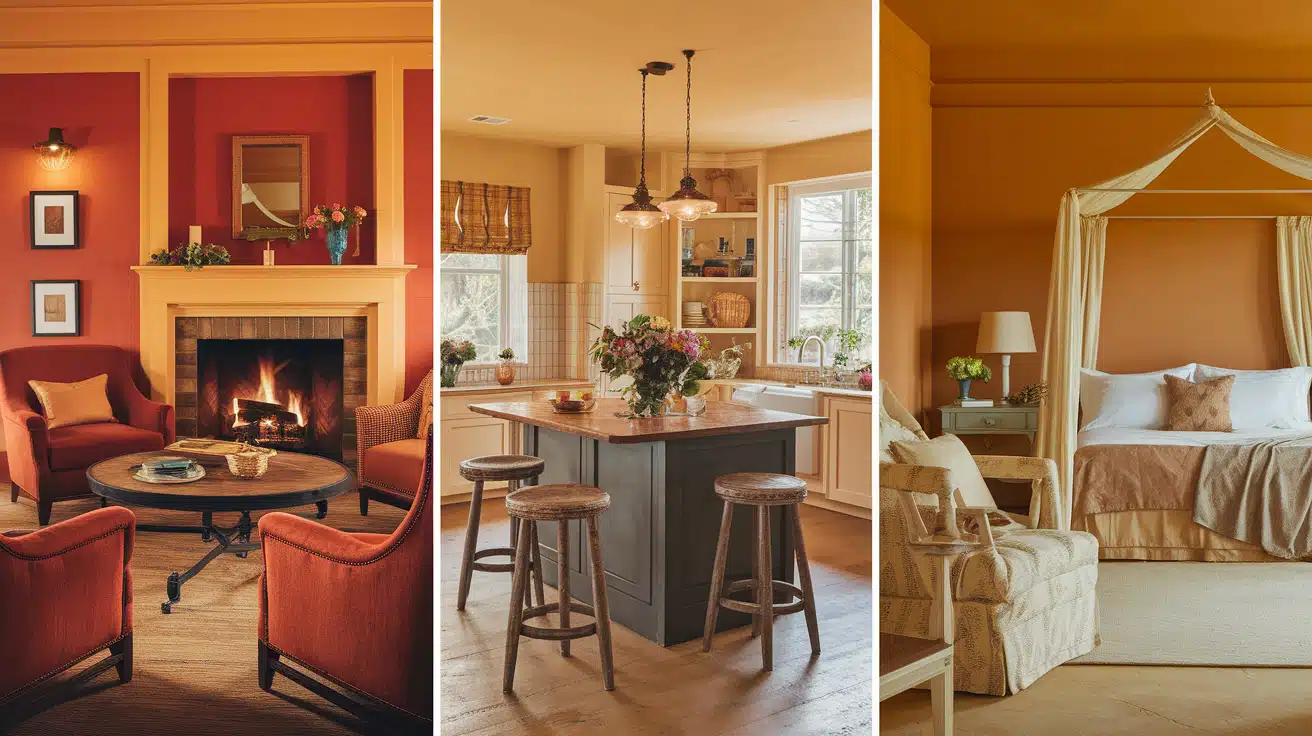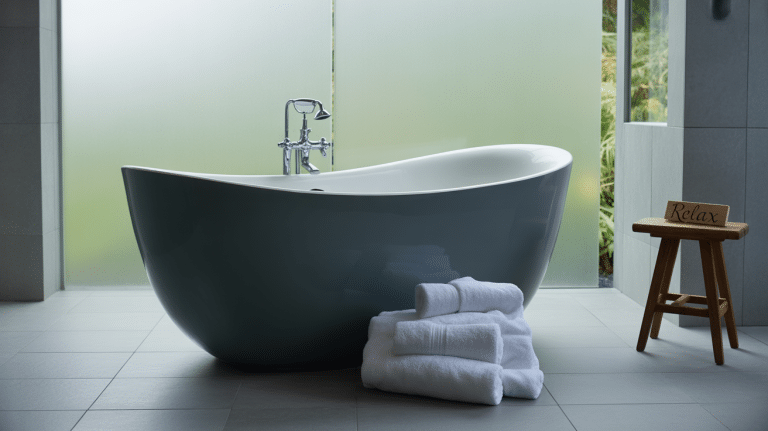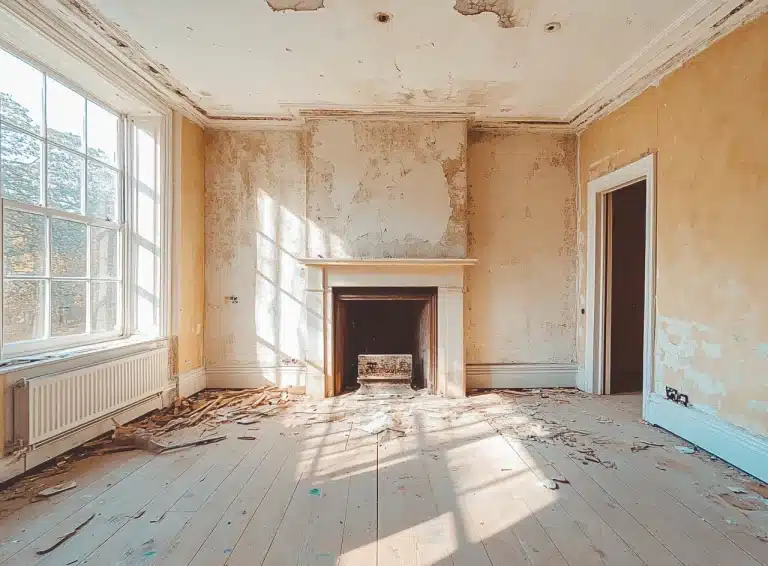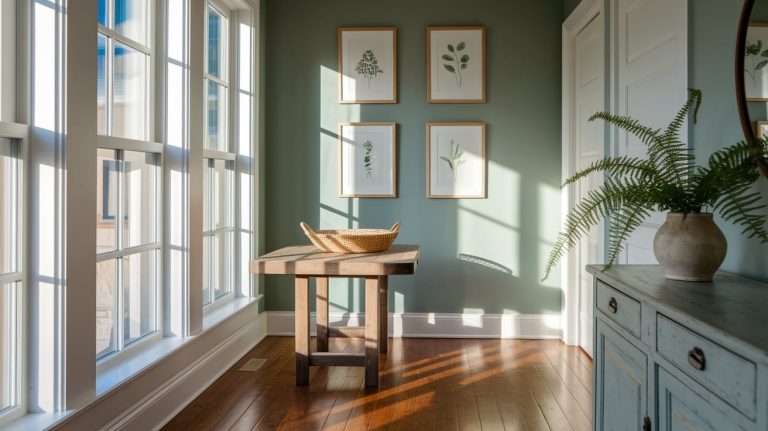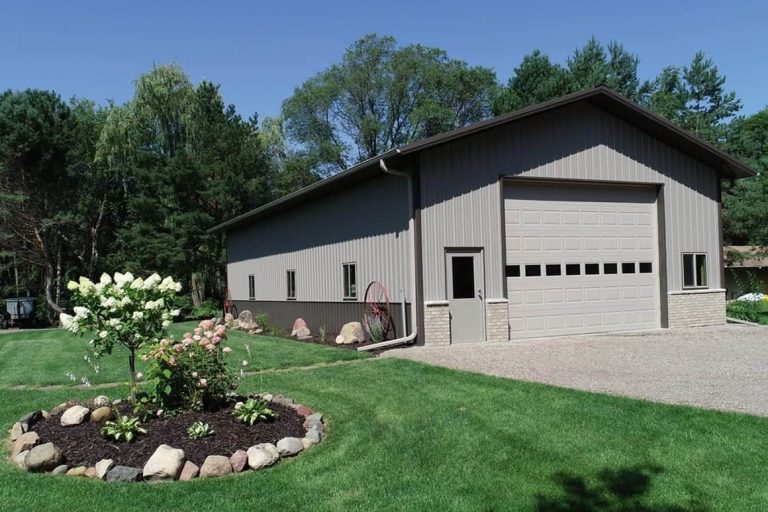51 Different Types of Rooms for Your Home
Planning your home means understanding how each room serves your daily life. Modern houses contain far more than basic living spaces; they include specialized areas for work, relaxation, storage, and hobbies.
Each room has specific design requirements and functions that contribute to your overall comfort and lifestyle.
From essential spaces like kitchens and bedrooms to luxury additions like wine cellars and home theaters, every room tells a story about how you live.
Thoughtful planning enables you to create spaces that cater to your family’s needs while enhancing the property’s value.
This guide covers a range of room types, from common areas that everyone recognizes to specialized spaces you may not have considered.
Whether you’re building new, renovating, or simply organizing existing spaces, understanding these room options will help you make better decisions about your home’s layout and functionality.
51 Different Types of Rooms in a House
Your home is more than just walls and a roof; it’s a collection of spaces that serve different purposes in your daily life. From cozy living areas to functional storage spaces, each room plays a vital role in making your house feel like home.
1. Living Room
The living room serves as the central gathering space for relaxation and entertainment. Focus on comfortable seating arrangements with a sofa as the centerpiece, complemented by coffee tables and proper lighting.
Choose colors and furniture that reflect your personal style while maintaining a welcoming atmosphere for family and guests.
2. Bedroom
Bedrooms come in various types, including master suites, guest rooms, and children’s spaces, each with specific needs.
Master bedrooms require ample storage and dressing areas, while guest rooms should feel welcoming with basic amenities. Comfort and personalization are key to selecting high-quality bedding, suitable lighting, and colors that promote restful sleep.
3. Kitchen
Modern kitchens range from traditional closed designs to open-concept spaces that flow into living areas. Essential elements include adequate counter space, storage solutions, and the classic work triangle, which consists of the sink, stove, and refrigerator.
Consider adding an island for extra prep space and choose layouts that match your cooking habits and entertaining style.
4. Dining Room
The dining room provides a dedicated space for meals and special occasions, helping establish family traditions and routines. Select a table size that suits your space, allowing for comfortable movement around the chairs.
Proper lighting, such as chandeliers or pendant lights, creates ambiance, while sideboards provide storage and serving space during gatherings.
5. Bathroom
Bathrooms vary from full baths with tubs and showers to compact half baths with just toilets and sinks. En-suite bathrooms offer privacy and convenience when connected to bedrooms.
Focus on proper ventilation, water-resistant materials, and adequate lighting while incorporating storage solutions such as medicine cabinets and vanity drawers.
6. Home Office
Creating an effective home office requires a quiet location with good lighting and minimal distractions. Invest in ergonomic furniture, including a comfortable chair and a desk of the appropriate size, to prevent strain during long work sessions.
Organization systems, reliable internet, and adequate electrical outlets are essential for maintaining productivity.
7. Laundry Room
Laundry rooms require basic appliances, as well as sufficient space for folding and storage of supplies. Include a sink for pre-treating stains, and consider adding a drying rack for air-drying clothes.
Maximize small spaces with wall-mounted cabinets, stackable units, and folding tables that serve as both storage solutions and functional furniture.
8. Garage
Garages serve multiple functions, from vehicle protection to storage and workshop space. Install wall-mounted storage systems and overhead racks to maximize organization and efficiency.
Create designated zones for different categories, such as tools, sports equipment, and seasonal items, using clear bins for easy identification.
9. Hallway
Hallways guide movement through homes and should be wide enough for comfortable passage with adequate lighting for safety.
Change these transitional spaces with artwork, family photos, or runners for added style. Consider built-in storage solutions, such as shelves or coat hooks, to maximize functionality.
10. Mudroom
Mudrooms prevent dirt and clutter from entering main living areas by providing space for removing shoes and coats.
Essential features include storage for outerwear, benches for seating, and hooks at various heights for family members to hang their belongings. Select washable flooring and add mats for easy cleaning and maintenance.
11. Basement
Basements serve various purposes, from storage to entertainment or additional living space. Before finishing, address moisture issues, add proper insulation, and plan for adequate lighting and climate control.
Consider ceiling height limitations and incorporate heating systems to ensure the space remains comfortable throughout the year.
12. Attic
Attics provide valuable storage space and can be converted into functional rooms with proper planning. Check structural integrity and ceiling height before conversion, then add insulation, ventilation, and adequate lighting.
Consider safe access options and electrical requirements for your intended use.
13. Pantry
Pantries come in various forms, from walk-in spaces to pull-out cabinet systems. Organize with clear containers for dry goods, group similar items together, and store frequently used items at eye level.
Add door-mounted racks for spices and use labeling systems for easy identification.
14. Walk-in Closet
Walk-in closets should include zones for hanging clothes, folded items, and accessories. Use double-hang rods for shorter items and single rods for longer pieces.
Add shoe storage, jewelry organizers, and good lighting with mirrors to create a functional dressing area.
15. Library
Personal libraries should feel calm and focused with comfortable seating and excellent reading light. Install floor-to-ceiling bookshelves and organize books by category or author.
Position the space away from high-traffic areas and use soft furnishings to absorb sound.
16. Home Theater Room
Home theaters require minimal windows for light control, blackout curtains, and acoustic treatments. Plan seating arrangements to ensure clear screen viewing and invest in high-quality audio-visual equipment.
Consider tiered seating in larger rooms and include comfortable chairs with cup holders.
17. Game Room
Game rooms should accommodate various activities with sufficient space around equipment, such as pool tables.
Create different zones for different games and add comfortable seating for spectators. Use bright colors and energetic lighting to encourage play and interaction.
18. Gym Room
Home gyms require good ventilation, adequate ceiling height, and flooring that can support the weight of equipment. Start with basic equipment, such as dumbbells and resistance bands, and then add larger items as space allows.
Include mirrors to check form and storage for smaller accessories.
19. Nursery
Nurseries require non-toxic materials, safety features, and comfortable temperature control. Essential furniture includes a crib, a changing table, and a comfy chair for feeding.
Use soothing colors and blackout curtains for better sleep, and avoid small decorative items that could pose safety hazards.
20. Guest Room
Guest rooms should offer hotel-like comfort, featuring quality bedding, ample storage, and thoughtful amenities. Include a comfortable bed, a dresser for clothing, and a bedside table with a lamp.
Add personal touches, such as fresh flowers, reading materials, and bottled water.
21. Powder Room
Powder rooms maximize functionality in minimal space with essential fixtures and smart design choices. Use light colors and mirrors to create the illusion of more space.
Choose wall-mounted fixtures to save floor space and add storage with medicine cabinets or small shelves.
22. Sauna Room
Home saunas require proper wood selection, such as cedar or hemlock, adequate ventilation, and electrical requirements for heating.
Regular use can improve circulation and reduce stress. Add comfortable seating, soft lighting, and temperature controls for the best experience.
23. Wine Cellar
Wine cellars need consistent temperature between 50-60°F, proper humidity control, and protection from vibrations and light.
Install wine racks that hold bottles horizontally and use UV-protective lighting. Consider backup cooling systems for valuable collections.
24. Sunroom
Sunrooms maximize natural light with large windows while requiring materials that handle temperature changes and UV exposure.
Choose weather-resistant furniture and add plants for a garden-like atmosphere. Include ventilation for comfort during hot weather.
25. Home Bar
Home bars should include a sink, refrigeration, and storage for glassware and bottles. Add bar stools for seating and create an ambiance with proper lighting.
Consider including an ice maker and small dishwasher for easy cleanup after entertaining.
26. Balcony/Veranda
Balconies extend living areas outdoors and require weather-resistant furniture and plants. Consider sun exposure and wind patterns when planning layout and furniture placement.
Add privacy screens if needed and include outdoor rugs and cushions for comfort.
27. Playroom
Playrooms should be child-proofed with safe materials, rounded corners, and easy-to-clean surfaces. Create separate zones for various activities and include labeled storage bins at a child’s height.
Add art supply storage and display areas for children’s creativity.
28. Foyer
Foyers create a lasting first impression and should remain uncluttered, with good lighting and durable flooring.
Include a console table for keys and mail, mirrors for last-minute appearance checks, and seating for removing shoes. Add hooks or closet space for outerwear.
29. Loft
Lofts offer flexible living with minimal walls and high ceilings. Use furniture and room dividers to create separate areas while maintaining the open feel.
Utilize vertical space for storage and opt for multi-purpose furniture to complement the open floor plan.
30. Study Room
Study rooms require quiet locations with good lighting and minimal distractions. Include comfortable desk and chair combinations with task lighting for reading and writing.
Add bookshelves, filing systems, and bulletin boards while keeping the space organized and clutter-free.
31. Sewing Room
Sewing rooms need excellent lighting, adequate work surfaces, and organized storage for supplies. Include comfortable seating and keep fabric, patterns, and notions within easy reach.
Use clear containers for small items and pegboards for tools.
32. Music Room
Music rooms require good acoustics with sound isolation to prevent disturbing others.
Add acoustic panels or carpeting to control sound and include adequate electrical outlets for instruments. Provide music stands and storage for instruments and equipment.
33. Meditation Room
Meditation rooms should embrace minimalism with soft colors and natural materials. Include comfortable floor seating options, such as cushions or meditation benches.
Add plants and soft lighting, and keep the space free from distractions to promote focus and tranquility.
34. Balcony Garden
Balcony gardens bring nature to outdoor spaces using containers of various sizes. Select plants that are suitable for your climate and sun exposure, and consider using plant stands to maximize growing space.
Add small seating areas to enjoy the garden atmosphere.
35. Workshop
Workshops require good lighting, ventilation, and organized tool storage, ideally using pegboards or toolboxes.
Include a sturdy workbench with storage space underneath and ensure there are adequate electrical outlets. Add safety equipment, such as first aid kits and fire extinguishers.
36. Zen Room
Zen rooms embrace simplicity with natural materials, neutral colors, and minimal decorations. Remove clutter and distractions while incorporating natural elements, such as plants or water features.
Use soft lighting and comfortable floor seating to maintain a peaceful atmosphere.
37. Indoor Pool Room
Indoor pool rooms require proper ventilation systems to handle humidity and prevent moisture damage. Choose slip-resistant flooring and corrosion-resistant fixtures.
Add comfortable seating areas and use waterproof lighting while considering natural light sources.
38. Storage Room
Storage rooms should be organized by categories with frequently used items at eye level. Use shelving systems, clear containers, and labeling for easy identification.
Maximize vertical space with tall units and include step stools for reaching higher shelves.
39. Pet Room
Pet rooms should be comfortable and safe, featuring easy-to-clean flooring and suitable furniture.
Include food and water stations, pet beds, and storage for supplies and toys. Add grooming areas and choose materials that withstand pet wear.
40. Craft Room
Craft rooms should inspire creativity with excellent lighting and organized storage systems. Include work surfaces at comfortable heights and use clear containers with clearly labeled contents.
Add pegboards for tools and flat storage for paper and fabric materials.
41. Bathroom Powder Room
Small powder rooms maximize functionality with compact fixtures and light colors. Utilize wall-mounted fixtures to conserve floor space and incorporate mirrors to create depth.
Include storage through medicine cabinets or small shelves while maintaining proportion.
42. Breakfast Nook
Breakfast nooks create intimate dining spaces with built-in seating and storage underneath. Select tables that are appropriately sized and add comfortable cushions with bright colors.
Include pendant lighting and plants to create a cheerful morning atmosphere.
43. Fireplace Room
Fireplace rooms should arrange seating to face the hearth while using the fireplace as the focal point.
Add mantels for decorative storage and include cozy textiles like throws and pillows. Select warm colors and natural materials for a cozy feel.
44. Greenhouse
Greenhouses provide ideal growing conditions with controlled temperature, humidity, and lighting.
Add benches and shelving for different plant types and install grow lights for additional illumination. Monitor environmental conditions regularly for optimal plant health.
45. Spa Room
Spa rooms should feel like luxurious retreats, complete with soaking tubs, rainfall showers, and comfortable seating. Include aromatherapy elements, soft lighting, and heated floors for comfort.
Add plants and natural materials to create a tranquil atmosphere.
46. Media Room
Media rooms should offer optimal viewing experiences, complete with comfortable seating and controlled lighting.
Add acoustic treatments for better sound quality and include storage for equipment and accessories. Use dimmable lighting for different activities.
47. Outdoor Kitchen
Outdoor kitchens require weather-resistant materials and should include grills, preparation areas, and storage.
Add refrigeration, sinks, and electrical outlets for convenience. Include bar seating and adequate lighting for evening entertaining.
48. Rooftop Terrace
Rooftop terraces offer unique outdoor living opportunities, but they require furniture that can withstand wind and weather.
Consider wind patterns and sun exposure when planning layouts. Add container plants for privacy and include outdoor lighting for safety.
49. Cigar Room
A dedicated space for those who enjoy cigars. This room would feature proper ventilation, comfortable seating, and a humidor for cigar storage.
It may also include mood lighting and a well-appointed bar area for an added touch of luxury
50. Closet Space
Small closets require efficient organization, including double-hang rods and vertical storage solutions. Add shelving, drawer units, and door-mounted hooks for accessories.
Use shelf dividers and boxes to store smaller items, such as socks and underwear.
51. Green Living Room
Green living rooms incorporate plants for air purification and natural beauty while choosing sustainable materials and furniture.
Utilize energy-efficient lighting and natural fabrics, incorporating recycled or upcycled decorative elements. Create fresh, natural atmospheres that connect with the outdoors.
Conclusion
Creating your ideal home means understanding how different rooms serve your lifestyle and needs. These room types offer endless possibilities for making your house both functional and comfortable.
From basic living spaces to specialized areas, each room contributes to your daily comfort and long-term satisfaction.
The key to successful home design lies in matching rooms to your actual needs rather than following trends. Consider your family size, hobbies, work requirements, and future plans when deciding which spaces to include.
Start with your most important spaces and gradually add specialized rooms as your needs and budget allow.
Remember that well-designed rooms not only add value to your property but also improve your quality of life. Take time to plan each space carefully for maximum functionality and enjoyment.
What room will you focus on first in your home? Share your thoughts in the comments below!
Frequently Asked Questions
What Are the Different Types of Rooms in a House?
Houses contain living spaces (bedrooms, living rooms), functional areas (kitchens, bathrooms), storage spaces (closets, pantries), and specialized rooms (home offices, gyms, libraries).
What Are the Top 7 Rooms in a House?
The most essential rooms are the living room, kitchen, bedroom, bathroom, dining room, home office, and laundry room.
What Do You Call the Rooms of a House?
Room names describe their primary function like bedroom for sleeping, kitchen for cooking, bathroom for hygiene, and living room for relaxation.
Which Other Rooms Do You Have in Your House?
Additional rooms may include guest bedrooms, walk-in closets, mudrooms, basements, attics, garages, and specialty spaces like home theaters or craft rooms.

